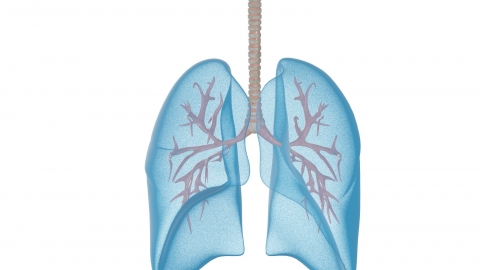What causes pulmonary dust deposition disease?
Generally, the main causes of pneumoconiosis include long-term inhalation of occupational dust, weakened respiratory clearance function, high content of free silica in dust, excessive dust concentration in the workplace, and chronic bronchitis. If symptoms such as coughing and chest tightness occur, it is recommended to seek timely diagnosis and treatment at a正规 hospital. Detailed explanations are as follows:
1. Long-term Inhalation of Occupational Dust
Working long-term in a dusty environment and inhaling large amounts of quartz dust, coal dust, and other types of occupational dust can lead to dust deposition in the lungs and gradually cause pulmonary fibrosis. Workers should wear qualified dust-proof masks and protective clothing, regularly replace protective equipment, and reduce dust inhalation during work.
2. Weakened Respiratory Clearance Function
With aging or existing respiratory mucosal damage, the ciliary movement function of the respiratory tract declines, reducing the ability to clear dust, which leads to dust retention in the lungs. Smoking should be avoided in daily life to prevent respiratory irritation, and appropriate respiratory exercises such as diaphragmatic breathing and pursed-lip breathing should be practiced to enhance respiratory clearance capacity.

3. High Content of Free Silica in Dust
The higher the content of free silica in dust, the stronger its pathogenicity. Long-term inhalation can easily lead to severe pulmonary fibrosis and cause pneumoconiosis. Employers should monitor dust composition, reduce exposure to dust with high free silica content, and workers can undergo regular lung examinations.
4. Excessive Dust Concentration in the Work Environment
When dust concentration in the workplace exceeds national standards, workers inhale more dust, increasing the risk of disease. Employers should improve the working environment by installing ventilation and dust removal equipment to reduce dust concentration; workers must strictly follow operational procedures and avoid prolonged work in environments exceeding dust concentration limits.
5. Chronic Bronchitis
Chronic bronchitis can lead to a decline in respiratory defense function, making it easier for dust to invade and deposit in lung tissue, thereby worsening the development of pneumoconiosis. Under a doctor's guidance, medications such as ambroxol hydrochloride oral solution, acetylcysteine effervescent tablets, and budesonide-formoterol powder inhaler can be used to alleviate symptoms and reduce respiratory damage.
In daily life, it is important to avoid dusty environments, undergo regular lung health check-ups, enhance nutrition by consuming foods rich in vitamins and proteins to strengthen lung function, engage in moderate exercise to improve physical resistance, and if working in a dusty occupation, strictly implement protective measures and undergo regular medical examinations.








